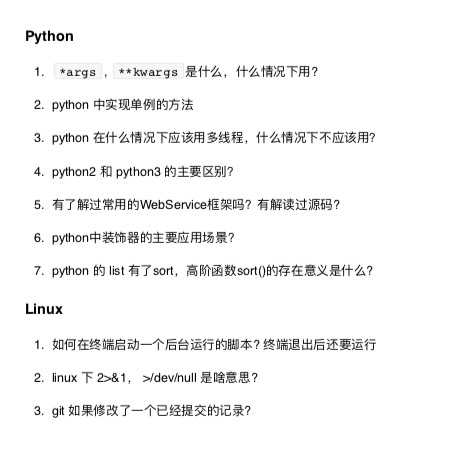python学习总结---学习交流群里的问题总结,,连续添加数据到明细:
python学习总结---学习交流群里的问题总结,,连续添加数据到明细:
连续添加数据到明细:
def onchange_product_id(self, cr, uid,ids, product_id,line_id, context=None): result={} if product_id: sql="select product_id, sum (qty) qty,lot_id ,max(in_date) in_date ,location_id from stock_quant where product_id=%d GROUP by product_id,lot_id ,location_id;"%(product_id) cr.execute(sql) dict=cr.dictfetchall()
# 这一句将原开数据,一直叠加进去 line_ids=line_id num=len(dict) i=0 for i in range(num): line_ids.append(({ ‘sequence‘:i+1, ‘product_id‘:dict[i][‘product_id‘], ‘lot_id‘:dict[i][‘lot_id‘], ‘wl_qty‘:dict[i][‘qty‘], ‘realy_qty‘:dict[i][‘qty‘], ‘date_in‘:dict[i][‘in_date‘], ‘location_id‘:dict[i][‘location_id‘], })) i+=1 result[‘line_id‘]=line_ids return {‘value‘:result}做odoo一年多了,今天碰到学习交流群里的一些问题:这里将它记录下来

当函数的参数不确定时,可以使用*args 和**kwargs,*args 没有key值,**kwargs有key值。
def fun_var_args(farg, *args):
print "arg:", farg
for value in args:
print "another arg:", value
fun_var_args(1, "two", 3) # *args可以当作可容纳多个变量组成的list
result:
[python]
arg: 1
another arg: two
another arg: 3
**kwargs:
[python]
def fun_var_kwargs(farg, **kwargs):
print "arg:", farg
for key in kwargs:
print "another keyword arg: %s: %s" % (key, kwargs[key])
fun_var_kwargs(farg=1, myarg2="two", myarg3=3) # myarg2和myarg3被视为key, 感觉**kwargs可以当作容纳多个key和value的dictionary
result:
[python]
arg: 1
another keyword arg: myarg2: two
another keyword arg: myarg3: 3
也可以用下面的形式:
[python]
def fun_var_args_call(arg1, arg2, arg3):
print "arg1:", arg1
print "arg2:", arg2
print "arg3:", arg3
args = ["two", 3] #list
fun_var_args_call(1, *args)
result:
[python]
arg1: 1
arg2: two
arg3: 3
#这里的**kwargs可以是字典类型参数
#简单的例子
[python]
def fun_var_args_call(arg1, arg2, arg3):
print "arg1:", arg1
print "arg2:", arg2
print "arg3:", arg3
#命名变量
kwargs = {"arg3": 3, "arg2": "two"} # dictionary
#调用函数
fun_var_args_call(1, **kwargs)
result:
[python] view plaincopyprint?
arg1: 1
arg2:"two"
arg3:3
python中的单例模式:
单例模式(Singleton Pattern)是一种常用的软件设计模式,该模式的主要目的是确保某一个类只有一个实例存在。当你希望在整个系统中,某个类只能出现一个实例时,单例对象就能派上用场。
实现单例模式的几种形式:
1.使用模块
其实,Python 的模块就是天然的单例模式
模块在第一次导入时,会生成.pyc文件,当第二次导入时,就会直接加载.pyc文件,
而不会再次执行模块代码。因此,我们只需把相关的函数和数据定义在一个模块中,就可以获得一个单例对象了
mysingleton.py
class Singleton(object): def foo(self): passsingleton = Singleton()
将上面的代码保存在文件mysingleton.py中,要使用时,直接在其他文件中导入此文件中的对象,这个对象即是单例模式的对象
调用时用: from a import singleton
2.使用装饰器

def Singleton(cls): _instance = {} def _singleton(*args, **kargs): if cls not in _instance: _instance[cls] = cls(*args, **kargs) return _instance[cls] return _singleton#运行时,会现加载他@Singletonclass A(object): a = 1 def __init__(self, x=0): self.x = xa1 = A(2)a2 = A(3)3.使用类

class Singleton(object): def __init__(self): pass @classmethod #类方法 def instance(cls, *args, **kwargs): if not hasattr(Singleton, "_instance"): Singleton._instance = Singleton(*args, **kwargs) return Singleton._instance
python学习总结---学习交流群里的问题总结
评论关闭